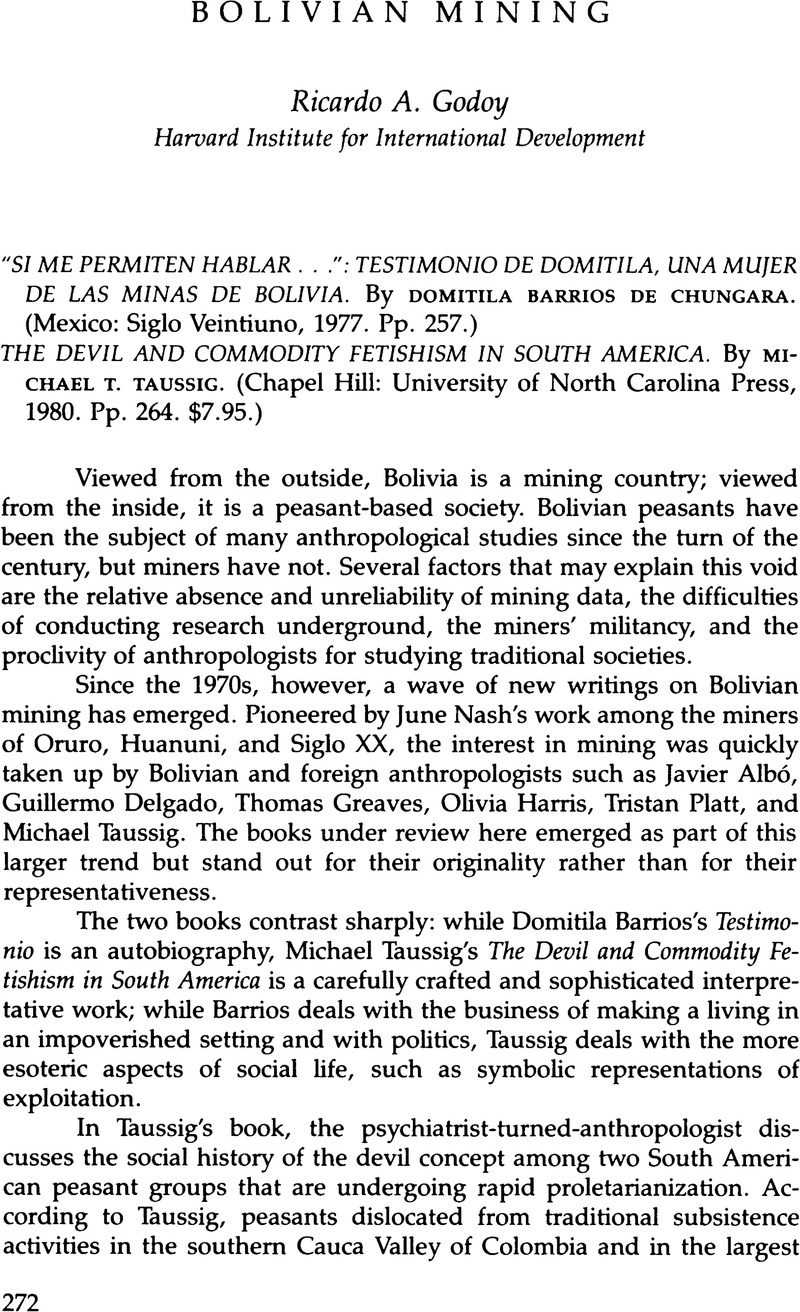Published online by Cambridge University Press: 12 October 2022

1. Peter J. Bakewell, “Registered Silver Production in the Potosí District, 1550–1735,” Jahrbuch fur Geschichte von Stoat, Wirtschaft und Gesellschaft Lateinamerikas 12 (1975):60; also his “Technological Change in Potosí: The Silver Boom of the 1570s,” Jahrbuch für Geschichte von Staat, Wirtschaft und Gesellschaft Lateinamerikas 14 (1977):65; Luis Capoche, Relación general de la Villa Imperial de Potosí (Madrid: Atlas, 1959), p. 108; Antonio Mitre, “The Economic and Social Structure of Silver Mining in Nineteenth-Century Bolivia,” Ph.D. diss., Columbia University; Enrique Tandeter, “La producción como actividad popular: ‘ladrones de minas’ en Potosí,” Nova Americana 4 (1981):47; also Tandeter's “Forced and Free Labour in Late Colonial Potosí,” Past and Present 93 (1981):130.
2. See Bakewell, “Registered Silver Production,” pp. 57–103, and “Technological Change in Potosí,” pp. 57–77. Also, Mitre's dissertation, cited in note 1; Joseph Barnadas, “Una polémica colonial: Potosí, 1579–1584,” Jahrbuch für Geschichte von Staat, Wirtschaft und Gesellschaft Lateinamerikas 10 (1973):16-70; and Enrique Tandeter, “La Rente comme rapport de production et comme rapport de distribution: la cas de l'industrie miniere de Potosi, 1750–1810,” Ph.D. diss., University of Paris, 1980.
3. See María Rostworowski de Diez Canseco, Recursos naturales renovables y pesca, siglos xvi y xvii (Lima: Instituto de Estudios Peruanos, 1981), p. 68; R. M. M. Crawford, D. Wishart, and R. M. Campbell, “A Numerical Analysis of High Altitude Scrub Vegetation in Relation to Soil Erosion in the Eastern Cordillera,” Journal of Ecology 58 (1970):176; H. Ellenberg, “Man's Influence on Tropical Mountain Ecosystems in South America,” Journal of Ecology 67 (1979):401-16; O. F. Cook, “Agriculture and Native Vegetation in Peru,” Journal of the Washington Academy of Sciences 6 (1916):289-90; and David Browman, “Pastoral Nomadism in the Andes,” Current Anthropology 15 (1974):193. See also Ricardo Godoy, “Ecological Degradation and Agricultural Intensification in the Andes,” Human Ecology (forthcoming).